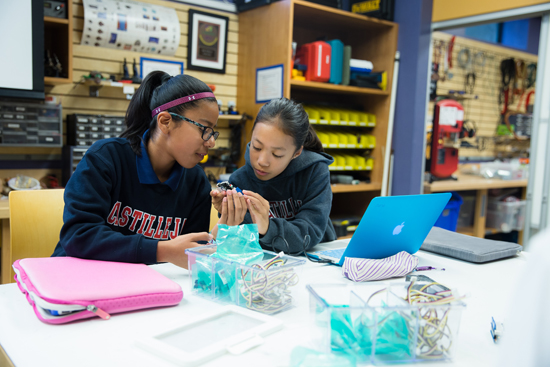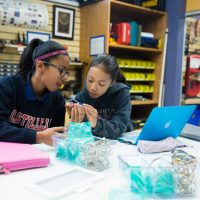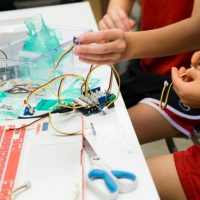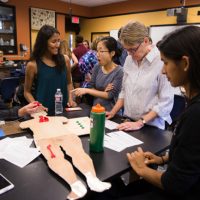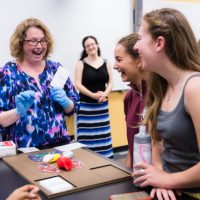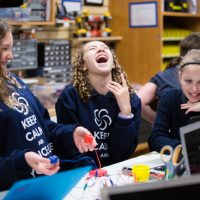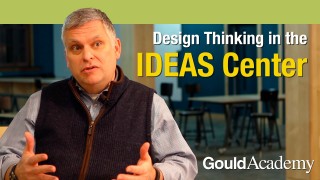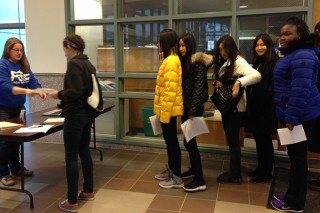As sixth graders, science students at Castilleja School begin developing skills as designers and engineers while creating interactive devices. They learn about sensors and actuators, programming, troubleshooting, and how to face frustrations that arise from failed iterations while celebrating improvements and successes, however incremental.
Fast forward to the senior year elective, “Biology and Economics of Cancer,” which helps students answer questions such as: what is cancer, what causes it, how can we prevent and treat it, and what are the obstacles — medical, economic, political — to “curing” it? One project involves designing an interactive cancer biology museum exhibit. Students work in teams and, building upon skills developed over the previous seven years, respond to several open-ended questions. They determine: What concept to focus on; how to distill that into physical form; and how to actually build a prototype. They conclude by hosting a “museum opening” for the entire school community.
Hands-on making, digital fabrication, and physical computing are integrated throughout the entire Castilleja experience. Students don’t just imagine their ideas; they explore and deepen their understanding through building physical prototypes. Teachers collaborate with the Bourn Idea Lab, the school’s dedicated makerspace, to design projects that fit into their curricula so that every student has multiple opportunities to experience making in the context of different disciplines.
“Cancer Bio challenged me to think creatively in a science class — something that’s not always taught at typical high schools,” says Juliet O’Brien ’16. “By applying those skills to a real-life problem and coming up with a hands-on project to communicate our learning, I truly came to understand the value of the ‘maker’ experience that’s so vital to Castilleja.”
